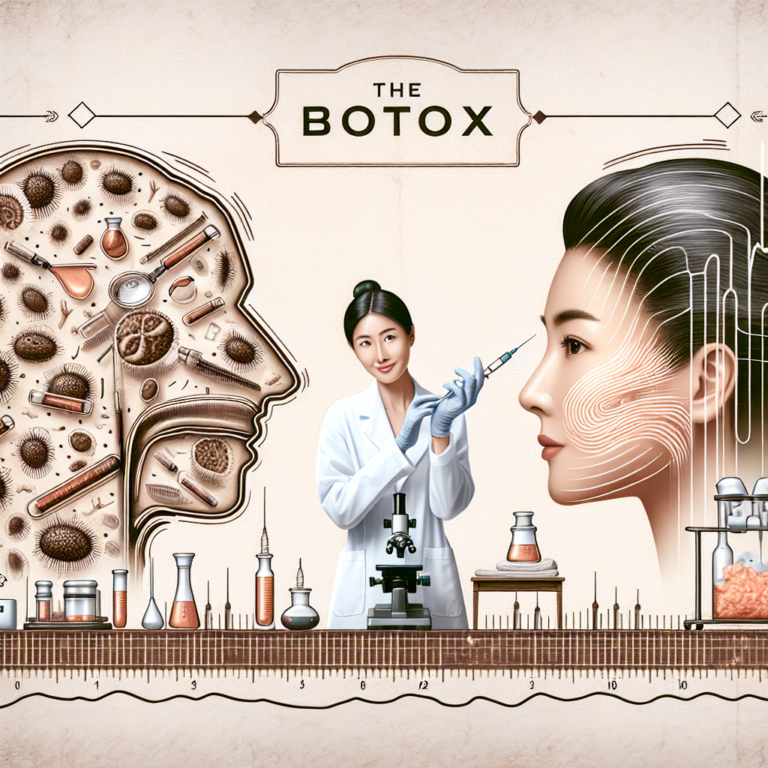In the world of aesthetics, few treatments have garnered as much attention and debate as Botox. Once a medical solution for very specific conditions, Botox has transformed into a cultural phenomenon, synonymous with beauty, youth, and the quest for an ageless visage. The journey from a toxic bacterium to a beloved anti-aging treatment is both fascinating and complex, highlighting the intersections of science, medicine, and beauty.
The Origins of Botox: From Poison to Panacea
Botox, or botulinum toxin type A, is derived from the bacterium Clostridium botulinum, which was first discovered in the late 19th century. This microorganism is infamous for producing one of the most potent poisons known to man, responsible for the deadly illness botulism, typically associated with improperly canned foods.
The story takes a turn in the 1980s when scientists discovered that, in minuscule doses, botulinum toxin could be used for therapeutic purposes. Ophthalmologists first experimented with Botox to treat strabismus (misaligned eyes) and blepharospasm (uncontrollable blinking). The treatment’s success in alleviating these conditions paved the way for broader medical applications, including treatment for migraines, excessive sweating, and muscle spasms.
The Aesthetic Revolution
The pivotal moment in the story of Botox occurred in 2002 when the U.S. Food and Drug Administration (FDA) approved it for cosmetic use—specifically, the smoothing of frown lines between the eyebrows. This approval followed anecdotal evidence from dermatologist Jean Carruthers and her husband, a neurologist, who noted that patients receiving Botox for medical reasons reported a secondary effect: they looked younger.
The marketing of Botox as a non-invasive alternative to surgical procedures quickly transformed perceptions of aging. No longer did one need to consider downtime associated with facelifts; a quick appointment could restore a youthful appearance in less than an hour. The rise of social media and celebrity endorsements propelled Botox into the limelight, making it a staple in beauty routines across demographics. It became especially popular among millennials and Gen Z, who embraced preventive measures to combat aging.
The Science Behind the Magic
The mechanics of Botox are astonishingly straightforward. When injected into the facial muscles, botulinum toxin blocks the chemical signals from nerves that cause muscles to contract. This leads to a temporary paralysis of the injected muscles, smoothing out wrinkles and fine lines for three to six months. Its effects gradually wear off, prompting many users to return for regular treatments.
Despite its popularity, Botox is not without risks. Side effects can include bruising, headaches, and more serious complications if not administered by a trained professional. The rise of "Botox parties," where friends gather for group injections, has raised concerns about the safety and efficacy of treatments performed in non-clinical settings. This emphasis on safety highlights the importance of seeking qualified practitioners to ensure the best outcomes.
Cultural Impact and Stigma
The Botox boom has sparked a societal conversation around beauty standards, aging, and self-image. While it has been hailed as a breakthrough for self-confidence and empowerment, critics argue that it perpetuates unrealistic beauty ideals. The phenomenon demonstrates the delicate balance between the desire for personal enhancement and the commodification of youth.
Despite shifting perspectives, the stigma surrounding Botox persists in some circles, often associated with vanity or a "fake" appearance. This stigma has prompted a movement towards normalization—encouraging open discussions about aesthetic procedures and advocating for realistic portrayals of beauty in media.
The Future of Botox and Aesthetic Medicine
As science continues to evolve, so too does the future of Botox and other cosmetic treatments. Research is ongoing into more sustained formulations, providing longer-lasting results. Additionally, the expanding field of regenerative medicine presents opportunities for combining Botox with other therapies such as fillers, creating comprehensive approaches to face rejuvenation.
Furthermore, the COVID-19 pandemic accelerated the trend of virtual consultations and home-based beauty treatments, signaling a shift toward more accessible cosmetic care. As societal views about beauty continue to evolve, the popularity of Botox is likely to endure.
Conclusion
The journey of Botox from a treacherous bacterium to an anti-aging icon exemplifies the extraordinary ways in which science can interconnect with everyday lives. With its widespread adoption, Botox has reshaped the landscape of beauty and medicine, challenging our perceptions of aging while offering a glimpse of the future of aesthetic treatments. As we move forward, the conversations inspired by this phenomenon will undoubtedly continue to evolve, reflecting our complex relationship with beauty, aging, and self-acceptance.


